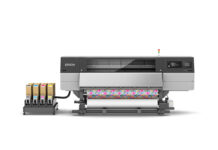 Installing channel letters has become a typical job in many sign shops, but that doesn’t mean shops still can’t learn new techniques here. Sign installers and suppliers offer some advice on the best ways to get letters to the job site and in place.
Installing channel letters has become a typical job in many sign shops, but that doesn’t mean shops still can’t learn new techniques here. Sign installers and suppliers offer some advice on the best ways to get letters to the job site and in place.
Proper Preparation
Whether this is a shop’s one hundredth channel letter install or its first, there are some things to always check on before heading out to the site.
And that preparation begins as early as the initial site survey and the bidding process. “It is all about the survey and being prepared from the start. What is the substrate? What are the landlord specifications? Are you talking about a flush mount or a raceway mount?” says John Lewis, president of Direct Sign Wholesale in Denver, Colorado. “What is the substrate and how thick is it? Is there crawl space?”
Those questions, along with what type of access and power is available, are important ones to answer before quoting or bidding on a job.
Oftentimes landing a job or making a profit from one a shop already has acquired comes down to price. Properly assessing the time and labor needed for a job and how that translates into a price will get a shop started off right. “The mistakes that are usually made here are in the bidding process, not necessarily in the installation,” says Lewis. “If you do not account for enough time for the install, you can lose money real fast on a channel letter job.”
Site inspections should also include a look at the entire area. “Installers need to survey the location of the installation,” say Dave Soulsby, owner & president, and Steve Ehmann, production manager, at Central Graphics in Cuyahoga Falls, Ohio. “Consider the affects of climate on the letters.”
Another important part of the survey is measuring. Referring to a blueprint (if one is available) is helpful, but an installer can and should take his own measurements, as well. “The old adage ‘measure twice, cut once’ applies,” says Lewis.
Knowing the overall dimensions of the fascia is also helpful. “Many cities have stipulations in the sign code. For example, a sign can only occupy 70 percent of the available space it is on,” says Michael McClure, service manager at Arrow Sign Company in Oakland, California. “It is important also for the permitting process to have that be correct.”
Sure a thorough site survey may take time, but it is time an installer will save later on. “If you put forth just a little bit of time and effort on the front end, it does tend to make things go a lot better on the back end,” says McClure.
Transporting Tips
Once the letters are fabricated, transporting them to the job site without jostling, scratching, or denting them can seem like a daunting task. Luckily transportation is not as difficult as it was when channel letters primarily used neon (which included fragile, glass tubes that broke easily). LEDs may be a hardier illumination source, but some of the materials used to make the letters still require care. For example, acrylic faces can be susceptible to some breakage, and brushed aluminum can easily be scuffed or marred.
The key is in proper packaging. “Whether an installation is local or requires long travel, the slightest shift of materials could be a costly result so taking the extra time to protect your letters is very important. Wrap the letters in plastic bubble wrap and cardboard and then use plastic shrink wrap to hold it all together,” says Soulsby. “I see a lot of companies that do not want to spend the extra money and time in wrapping up their product to transport it, and [this] ends up costing more in the long run.”

Installation Instructions
When the letters arrive safely onsite, an installer should be sure to take his time. “Avoid being in a hurry to complete an installation because drilling or adhering letters is a permanent process and the slightest miscalculation could result in a poor-looking result,” says Ehmann. “I also recommend checking your measurements multiple times and performing a ‘dry fit’ of your letters before final installation to ensure your results appear the way you had planned.”
Take the time to also properly secure a pattern to the wall before drilling. On surfaces where tape is not an option, McClure recommends using staples if the surface allows.
Wall surfaces can not only pose problems to taped patterns but also to drilling. “As far as actual drilling, probably pre-cast concrete or tilt-up concrete is the worst—particularly if it has rebar in it because you do not know where that is at,” says McClure. “Some of the other more difficult surfaces to deal with would be granite or marble. Marble is really difficult to drill.” (Note: When drilling marble for previous jobs, McClure used a diamond-tipped saw.)
When working with brick surfaces, installers should be aware that not all brick is laid perfectly. “Measuring off slanted joint lines will leave you with a sloped final product,” says McClure. “Take careful measurements and use tools like bubble and laser levels as a guide of reference.”
An installer should know what material he will be up against ahead of time so he can prepare—hence the need for a proper site survey. “The important thing is just to have the correct kind of bits or hole saws or whatever you need to do the job right,” says McClure.
When securing letters to a pylon sign or panel, the option to use an adhesive may be available. “Use a durable adhesive that can be relied on to keep performing over time and against the elements,” says Soulsby. “Also, if required, the use of correctly measured mounting hardware will not leave you wondering if your application will fail or not.”
Securing Safety
The proper precautions should always be taken when installing channel letters to ensure the safety of everyone on the job site. “Proper knowledge of your tools and equipment is key. Safety glasses, harnesses, and headgear are always a must,” says Ehmann. “More times than not, an installer will be elevated on ladders, scaffolding, or bucket cranes so following safety regulations is a must to avoid any injury on the job.”
Those safety regulations include OSHA rules regarding service vehicles. “Typically when you are working out of either an aerial ladder or a boom truck with a basket or even a boom lift, OSHA requires you to have a safety harness and to have a safety lanyard tied off to a stable attachment point,” says McClure.
Installers should be familiar with all OSHA rules and regulations before heading out to the job site.
Photo (top) courtesy of Direct Sign Wholesale. Photo (bottom) courtesy of Central Graphics.











